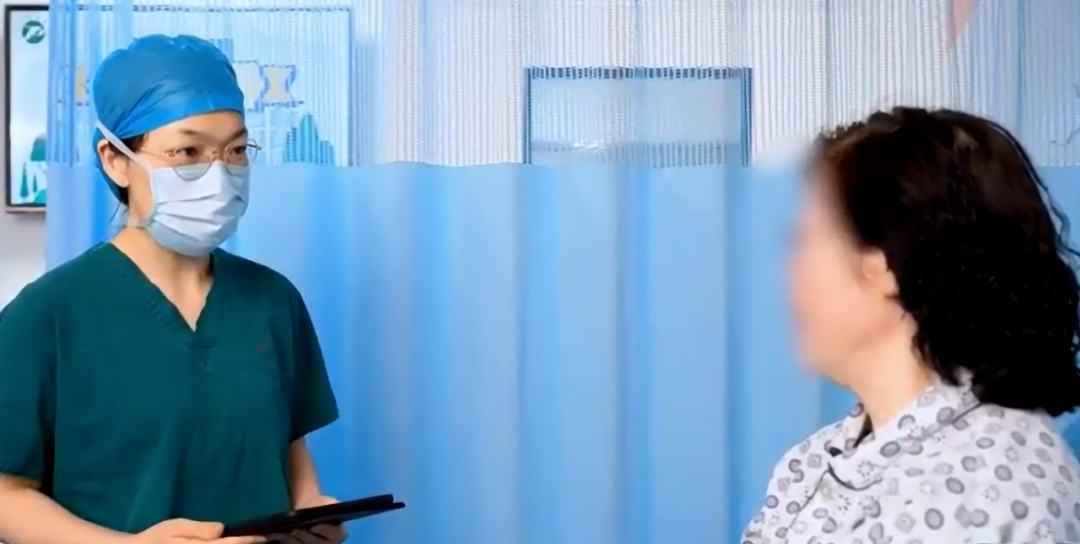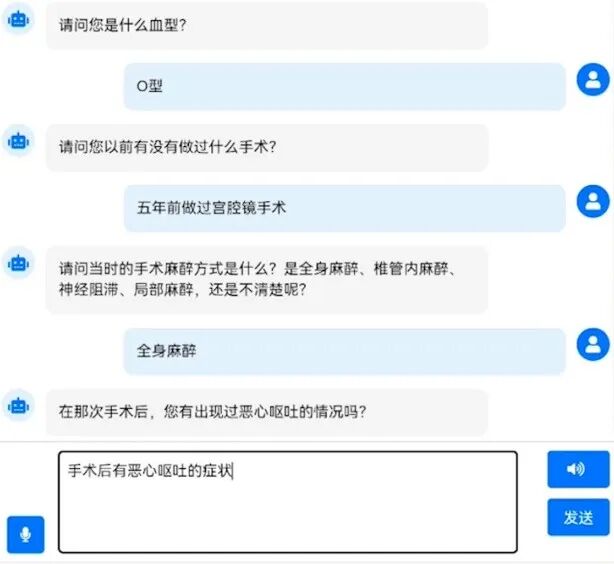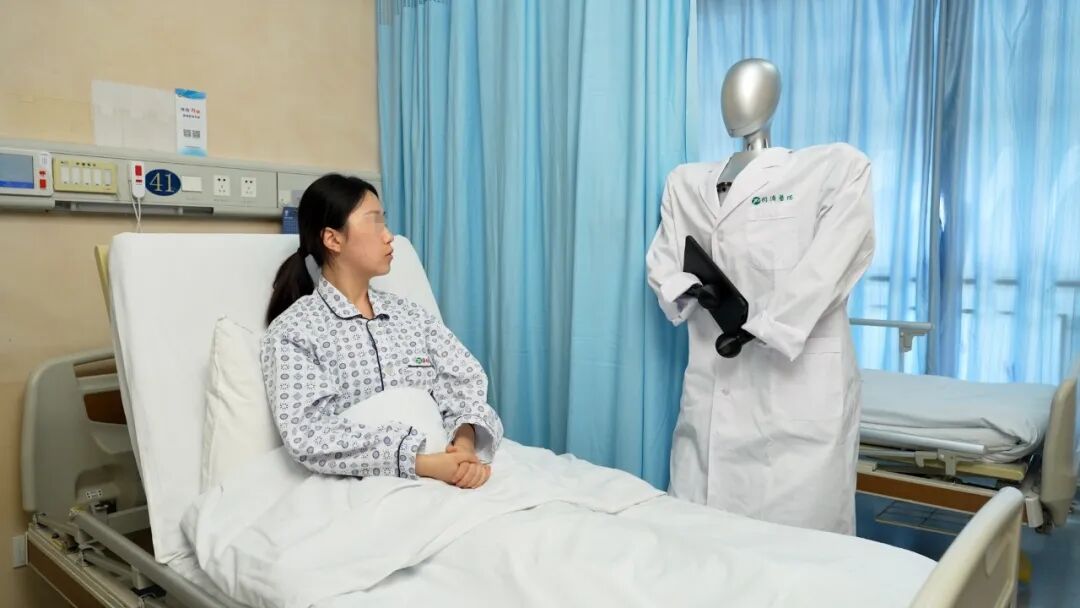
Can you imagine
a robot ‘doctor’
conducting preoperative visits for patients?
Huazhong University of Science and Technology’s AI + Medical Engineering
has brought new achievements!
Tongji Hospital affiliated with Tongji Medical College
Dr. Xu Hui’s team
Academician Ding Han’s team from the School of Mechanical Engineering
Professor Zhang Haitao’s team from the School of Artificial Intelligence and Automation
formed an interdisciplinary team
to collaboratively develop the
“Shu Wen” Intelligent Preoperative Visit System
making this possible

Preoperative visits refer to the medical activities conducted by
a medical team consisting of
surgeons, anesthesiologists, nurses, etc.
to systematically assess and communicate with patients
before surgery
to ensure that patients are fully informed and
psychologically prepared
It isthe core step to ensure surgical safety
and postoperative recovery
Currently, the field of anesthesia in our country is facingthe dual pressure ofshortage of human resources and surging patient demandAccording to statistics, the number of surgeries for hospitalized patients in 2023 has exceeded 96 millionand continues to grow at an annual rate of about 10%with a shortage of 200,000 anesthesiologists nationwideFaced with a large patient population, anesthesiologists have to complete preoperative assessments and postoperative follow-ups in a short timeleading tosevere compression of doctor-patient communication timeUnder the current medical resource conditions,it has become an urgent challenge to ensure the quality of medical workwhile alleviating patient anxiety.

“Shu Wen” interacts with patients through multi-turn progressive natural language dialogue
The name “Shu Wen” comes from
the “Su Wen” of the Huangdi Neijing
which means “seeking the source”
Its feature lies in
achieving intelligent collection and processing of patient information
through multi-turn progressive natural language dialogue interaction
It can efficiently obtain
key information such as patient medical history and lifestyle habits
and also remind anesthesiologists of potential risks
helping them to prepare risk assessments and preoperative plans in advance
By preliminarily assessing difficult airways,
it can also provide real-time alerts to anesthesiologists
reducing their workload
“Shu Wen” utilizesmedical knowledge graph retrieval
enhanced generation
allowing large language models to not only“understand medicine”
but also“speak human language”
Through easy-to-understand communication methods,
delicate empathy, and 24/7 accessibility,
it effectively improves patient experience
Currently, “Shu Wen” has successfully passed
clinical validation for over a hundred preoperative assessments
with excellent patient satisfaction and anesthesiologist recognition
Both indicators have performed outstandingly
preliminarily verifying the clinical applicability of the system

Robot & Super Brain?
Based on the aforementioned “client-patient”
version of the preoperative visit,
the team further collaborated to develop the
“Shennong Humanoid Robot-Patient”
preoperative visit model
which adds action interaction
on the basis of voice interaction
making communication more friendly
and providing patients with a new experience
Huazhong University of Science and Technology (ihuster)
Source / School of Artificial Intelligence and Automation, Tongji Hospital
Editor / Wang Weitang, Fan Qian
Reporter Group Zhang Ziwei
Proofreader / Guo Yuchen, Zuo Ying
